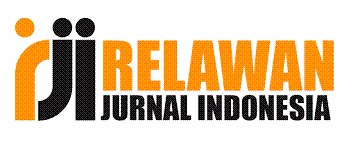Blended Learning Through Learning Manajement System In Mathematic Of Statistic And Opportunity : Students’ Perception
Abstract
During the COVID-19 pandemic, the conventional education revolution to technology-based education became the world’s spotlight. Online learning activities are one of the most effective solutions during the COVID-19 pandemic. Learning has begin to transition from face-to-face learning to distance learning (online learning) through. Blended learning activities are one of the best options thet can be implemented after the COVID-19 pandemic situation. Student perceptions have a significant part in enhancing students' role, activeness, and progress during the learning process in order to attain learning objectives. As a result, the goal of this research was to find out how senior high school students perception about blended learning though LMS in mathematics. This study employs descriptive quathitative methods with 47 sudents of grade IX in one of SMP Negeri at Sokaraja as a respondent of the study. Questionaire was used to collect the data. According to the findings of the study, Class IX students' perceptions of online learning in subjects Mathematics in the Covid-19 Pandemic at SMP Negeri 2 Sokaraja are in moderate category with a percentage of 6. percentage of 42.56%.
References
Bao, W. (2020). COVID â€19 and online teaching in higher education: A case study of Peking University . Human Behavior and Emerging Technologies. https://doi.org/10.1002/hbe2.191
Carvalho, A., Areal, N., & Silva, J. (2011). Students perceptions of Blackboard and Moodle in a Portuguese university. British Journal of Educational Technology. https://doi.org/10.1111/j.1467-8535.2010.01097.x
Cohen, L., Manion, L., & Morrison, K. (2007). Research Methods in Education. In 6th (Ed.), Education (Vol. 55, Issue 4). Routledge. https://doi.org/10.1111/j.1467-8527.2007.00388_4.x
Keong, C., Horani, S., & Daniel, J. (2005). A study on the use of ICT in mathematics teaching. Malaysian Online Journal of Instructional Technology.
Learning, O. (2011). Research on the Effectiveness of Online Learning. Cost Efficiencies in Online Learning: ASHE Higher Education Report.
Means, B., Toyama, Y., Murphy, R., Bakia, M., & Jones, K. (2009). Evaluation of Evidence-Based Practices in Online Learning. Structure.
Muhaemin. (2019). Massive open online course: Opportunities and challenges in state islamic higher education in Indonesia. Asian EFL Journal.
Nardi, P. (2006). Doing survey research: A guide to quantitative methods. Real World Research.
Raman, A., & Halim Mohamed, A. (2013). Issues of ICT usage among Malaysian secondary school English teachers. English Language Teaching. https://doi.org/10.5539/elt.v6n9p74
Robla, S., Llata, J. R., Torre-Ferrero, C., Sarabia, E. G., & Perez-Oria, J. (2014). OPEN COURSE WARE AND MASSIVE OPEN ONLINE COURSE EXPERIENCE AT THE UNIVERSITY OF CANTABRIA. ICERI2014: 7TH INTERNATIONAL CONFERENCE OF EDUCATION, RESEARCH AND INNOVATION.
Shafer, M. C., Davis, J., & Wagner, L. R. (1997). Teacher Questionnaire II: School Context. 10.
Sintema, E. J. (2020). Effect of COVID-19 on the performance of grade 12 students: Implications for STEM education. Eurasia Journal of Mathematics, Science and Technology Education. https://doi.org/10.29333/EJMSTE/7893
WHO. (2020). Pesan dan Kegiatan Utama Pencegahan dan Pengendalian COVID-19 di Sekolah. Unicef.
Williamson, K., Given, L. M., & Scifleet, P. (2018). Qualitative data analysis. In Research Methods: Information, Systems, and Contexts: Second Edition. https://doi.org/10.1016/B978-0-08-102220-7.00019-4

























